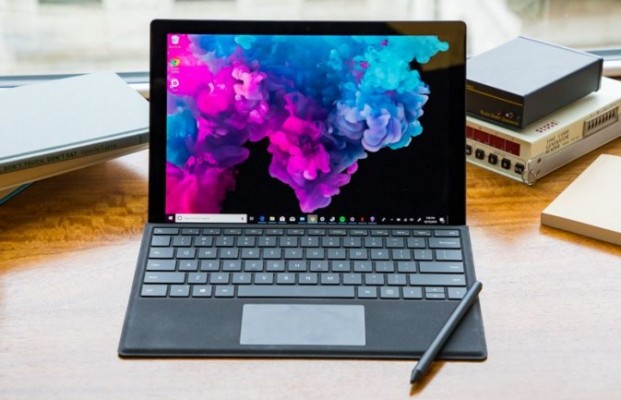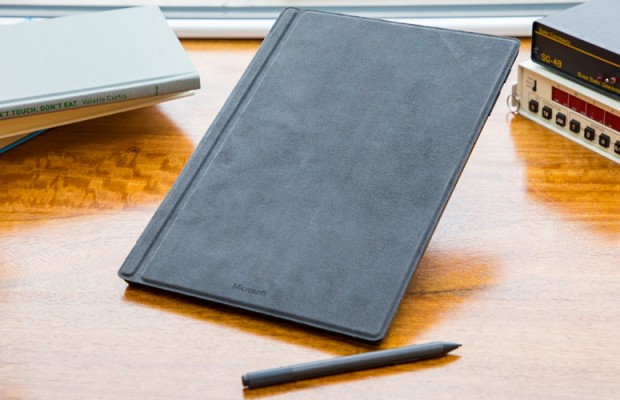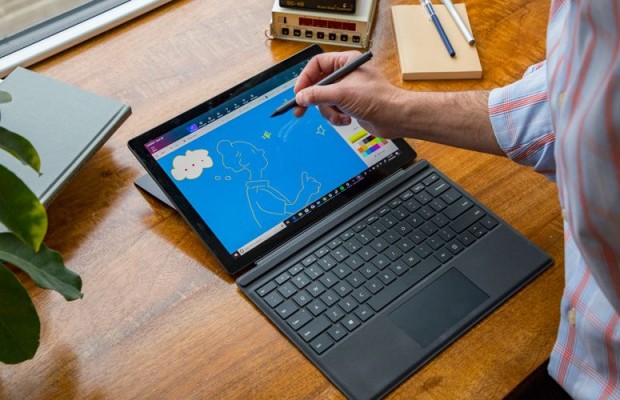Surface Pro 6 Buying Guide: Which Specs Are Right For You?
If you've navigated the bustling 2-in-1 market and settled on the Microsoft Surface Pro 6, then you've made an excellent choice. The detachable's gorgeous display, fast performance and elegant design earned it our Editor's Choice award. But before you purchase the Surface, you'll need to pick a configuration.
Buying directly from Microsoft Store's online store gives you the ability to tweak the Surface Pro 6's components to your liking, keeping price and performance in mind. Unfortunately, Microsoft's pricing scheme encourages spending a ton of money on upgraded specs.
But don't worry, we'll walk you through each of the configurations so you can get the best model for your needs — without overspending.
Surface Pro 6 Configuration Options Simplified
| Row 0 - Cell 0 | Cheapest Option (with keyboard and pen) | Our recommendation | Power Users |
| Price | $899 ($1,129) | $1,199 ($1,429) | $1,899 ($2,129) |
| Color | Platinum | Platinum, Black | Platinum, Black |
| CPU | Intel 8th Gen Core i5 | Intel 8th Gen Core i5 | Intel 8th Gen Core i7 |
| RAM | 8GB | 8GB | 16GB |
| Storage | 128GB | 256GB | 512GB |
| Keyboard/Pen | Type Cover, Surface Pen | Signature Type Cover, Surface Pen | Signature Type Cover, Surface Pen |
| Extras | 128GB microSD Card ($50) | Row 7 - Cell 2 | Row 7 - Cell 3 |
Down to Basics
Microsoft claimed at its launch event that the Surface Pro 6 starts at $899, and while that's technically true, there are some caveats it failed to mention. For one, the base configuration isn't available on the standout matte-black model.
Those who opt for the sleek new color scheme are forced to upgrade their storage to a 256GB SSD. That wouldn't be so bad if doing so didn't cost an egregious $300. (By comparison, Apple charges $200 to go from 128GB to 256GB on the 13-inch MacBook Pro.)
That said, students or casual users who want to stay below $1,000 have one option: the base silver Surface Pro 6 with an Intel Core i5 CPU, 8GB of RAM and 128GB SSD. Those are, at least, our recommended minimum specs for a laptop that costs more than $600.
MORE: Surface Pro 6 vs. iPad Pro: What Should You Buy?
While the quad-core Core i5 CPU is plenty powerful, 128GB (94GB out of the box) of SSD isn't enough for those who want to download large programs. If you plan on uploading a ton of photos or documents onto your computer, consider purchasing a large-capacity microSD card. You can easily score a fast 256GB microSD card for less than $100.
Keyboard and Pen cost extra
But wait, you're not done spending money just yet. The Surface Pro 6 lives up to the billing as a detachable only when accompanied by the Surface Type cover. The keyboard accessory costs $129 and goes up to $159 if you opt for the Alcantara fabric version or want a fingerprint sensor.
Add another $99 for the Surface Pen and you might be spending more for the Surface Pro 6 than you had expected.
Costly Configurations
The Core i5 CPU included in the base model is powerful enough for most users, but CPU-intensive tasks, like photo and video editing, 3D design and scientific modeling applications, require a bit more oomph. To run those programs, Microsoft sells the Surface Pro 6 with a Core i7 CPU, starting at $1,499 when configured with 8GB of RAM and a 256GB SSD.
This is when the Surface Pro 6 gets very expensive. These next few configurations should only be considered by those who need the most powerful system and large amounts of storage for running demanding apps. For $1,899, the least expensive config with 16GB of RAM has a 512GB SSD and a Core i7 CPU. Splurging on the top-of-the-line-model (again, only available with the Platinum color scheme) with a Core i7, 16GB of RAM and a 1TB hard drive will set you back a resounding $2,299.
Credit: Laptop Mag
Sign up to receive The Snapshot, a free special dispatch from Laptop Mag, in your inbox.
Phillip Tracy is the assistant managing editor at Laptop Mag where he reviews laptops, phones and other gadgets while covering the latest industry news. After graduating with a journalism degree from the University of Texas at Austin, Phillip became a tech reporter at the Daily Dot. There, he wrote reviews for a range of gadgets and covered everything from social media trends to cybersecurity. Prior to that, he wrote for RCR Wireless News covering 5G and IoT. When he's not tinkering with devices, you can find Phillip playing video games, reading, traveling or watching soccer.




